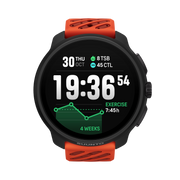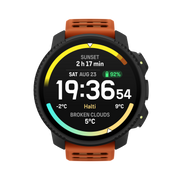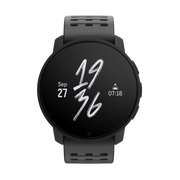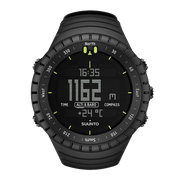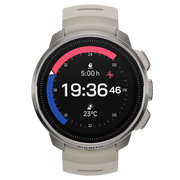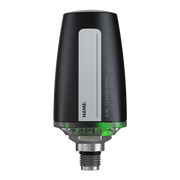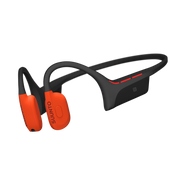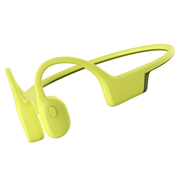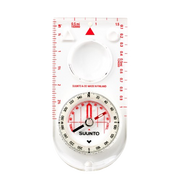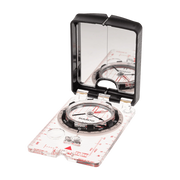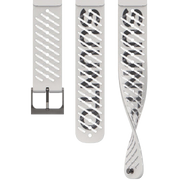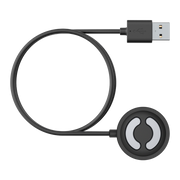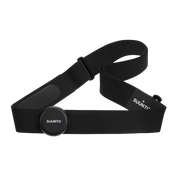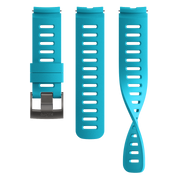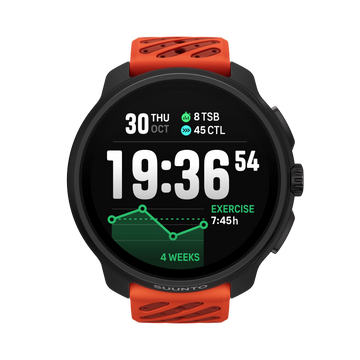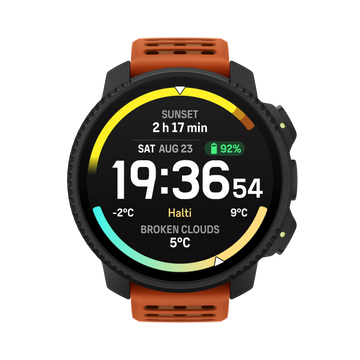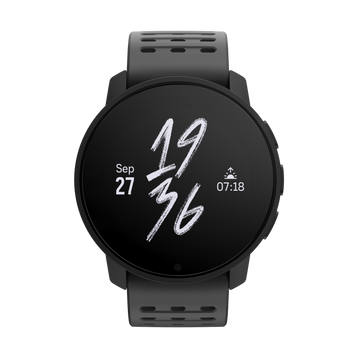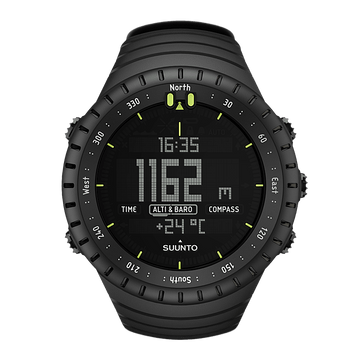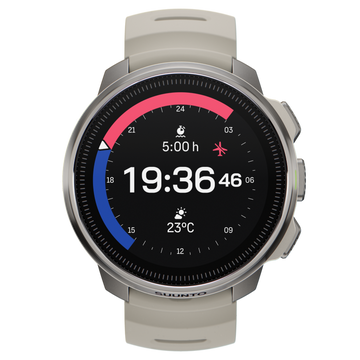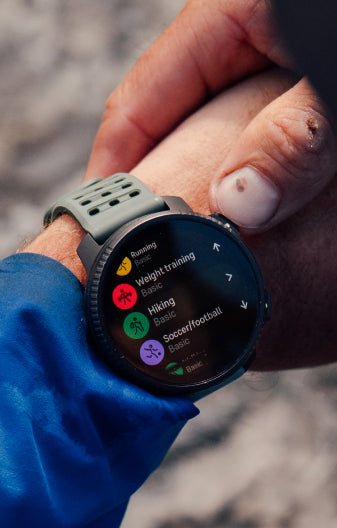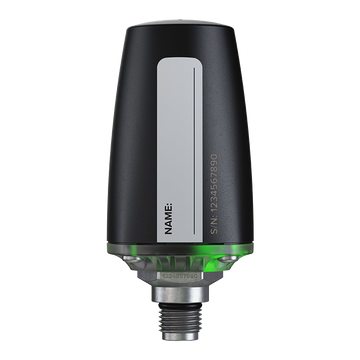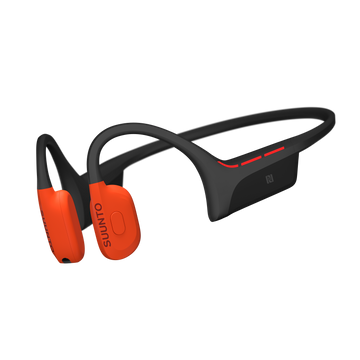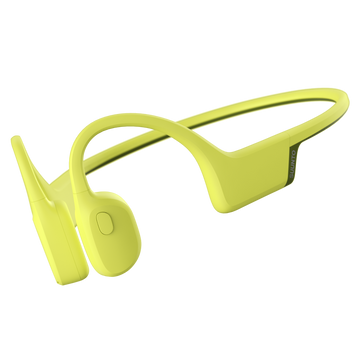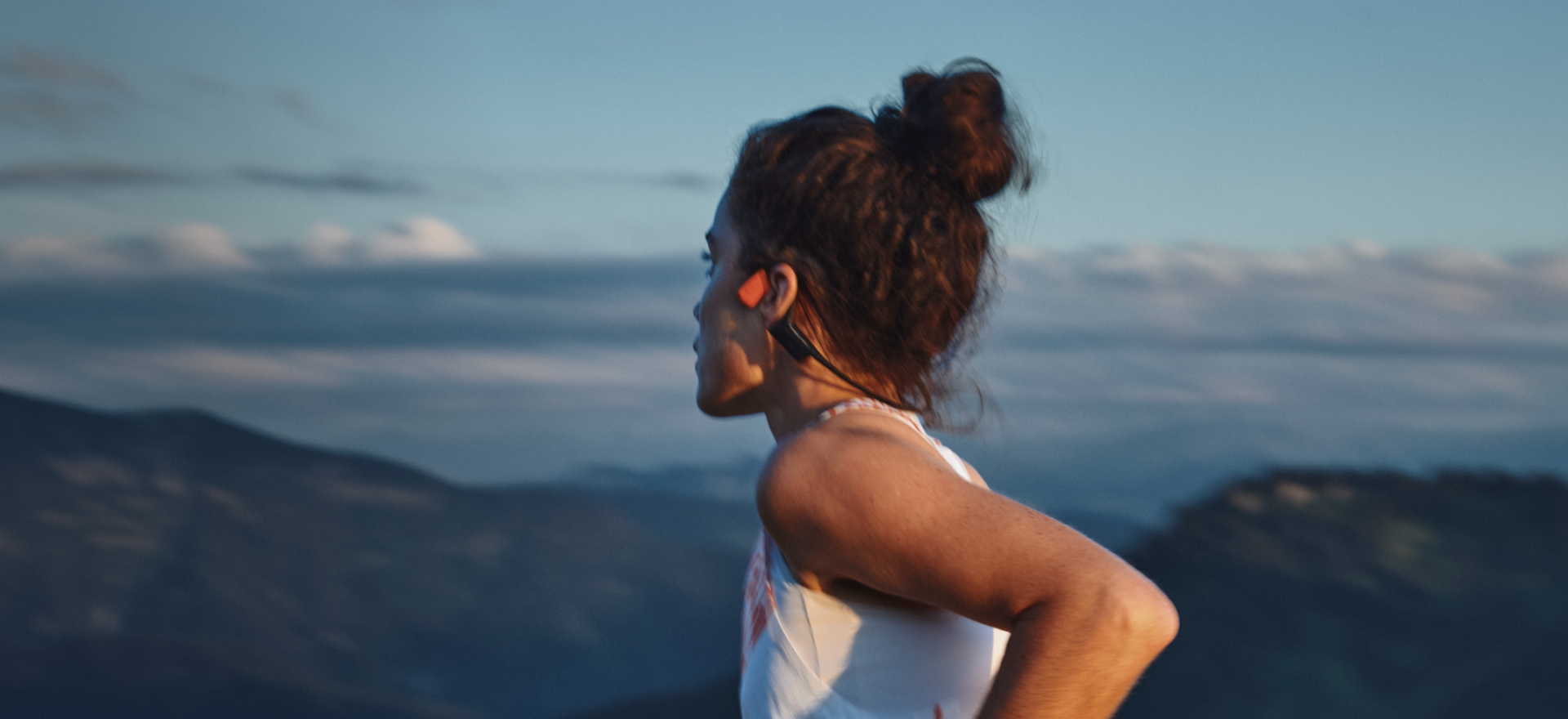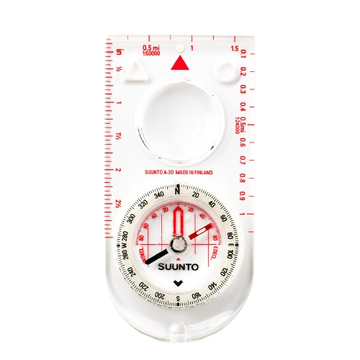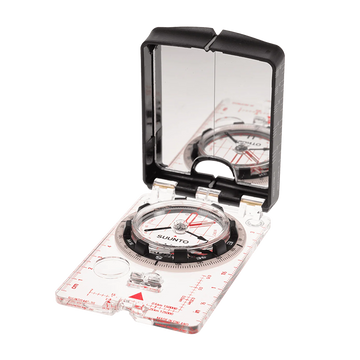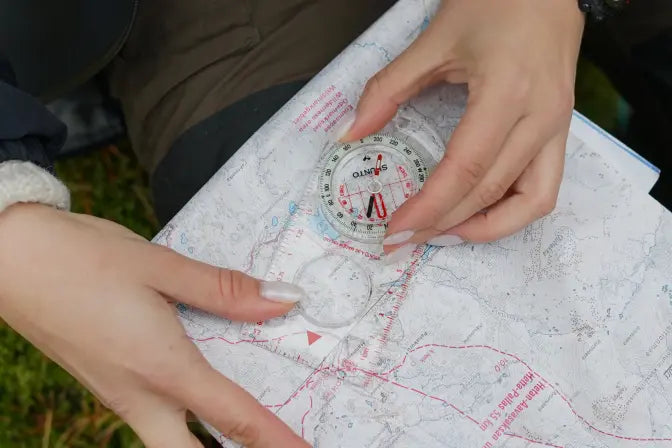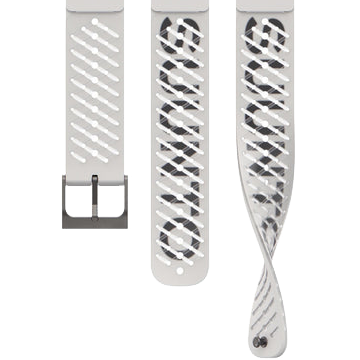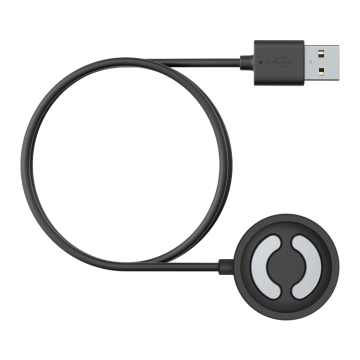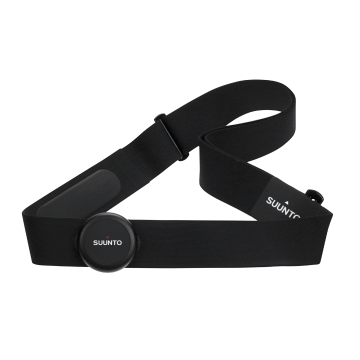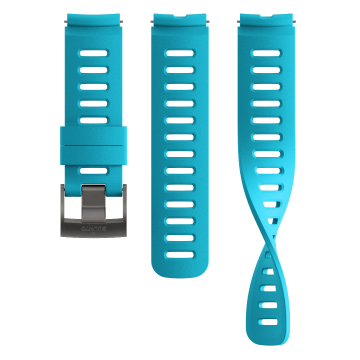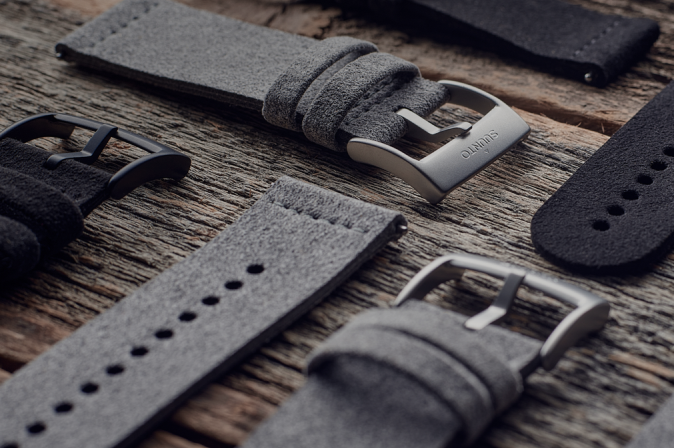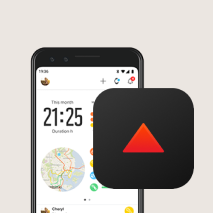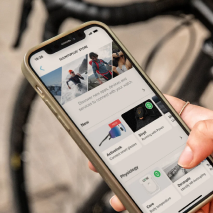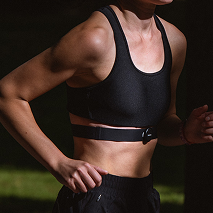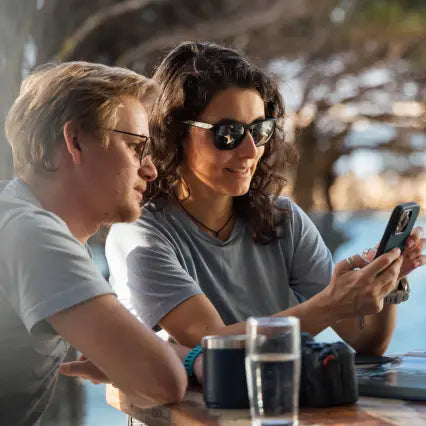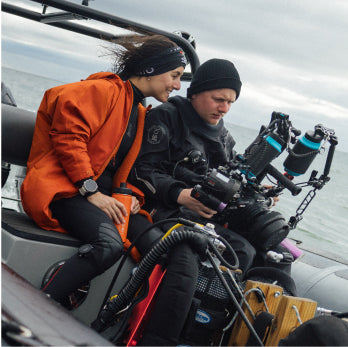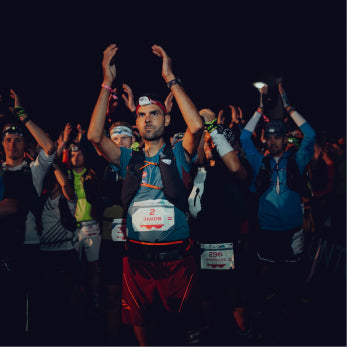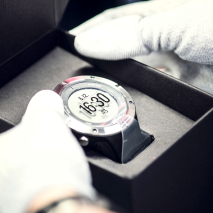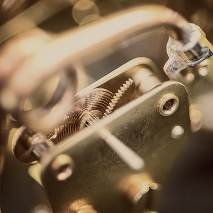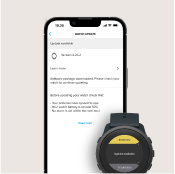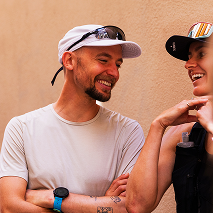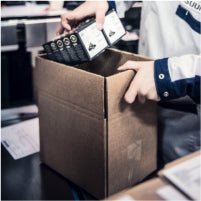

Suunto Blog

How deep can we go?
As freediver William Trubridge embarks on his attempt to dive to 102m unassisted in a single breath, he speaks to us about the future of the sport and how deep human beings could go.
Image (and feature image) Alex St Jean
Freedivers are continually pushing their boundaries, reaching depths never thought possible. William, as ever is leading the way and will attempt to break his current world record of 101m for the CNF discipline (Constant Weight No Fins) when he dives in Dean’s Blue Hole in the Bahamas on July 21,2016 as part of the Return To The Deep event produced by Steinlager Pure.
But what are the limits, will the point come when freedivers just can’t go any deeper? William suspects the answer is yes, but it’s not so clear-cut. He says: “I think we’re starting to plateau now. I wouldn’t like to speak too soon, but based on how I feel in my training, and what I’ve seen of results and performances over the last 15 years I’ve been involved in the sport, the rate of increase has definitely slowed down dramatically in the last five to eight years.”
"I think we're starting to plateu now."
Image Daan Verhoeven
The records have moved quickly as the sport progressed, from 81m at William’s first record, to 101m at his current standing. The chance of leaps like that being repeated could be slim he says: “I’ve added 20m and I don’t think, I can say pretty much for certain, that I’m not going to add another 20m on to that myself in that discipline and I would be really surprised if even in my lifetime we get to that kind of depth.”
Fellow freedivers are also less inclined to make predictions that they will reach greater depths, suggesting the industry feels a “natural limit” is nearing. That’s not to say more records won’t be reached, just not with the same frequency as previous years. William says: “I don’t think anyone would disagree that we can add a few meters on all of the disciplines. The prospect of much greater depths has dried up to a large extent. It’s hard to imagine an innovation that could change things.”
The motivation for William hasn’t abated, however, he still feels the drive to push himself further. “I definitely motivate myself and I feel like I have the same motivation now as I did 10 years ago,” he says. “I feel like it’s a sport where we peak a lot later in our lives than in other sports. It’s more comparable to marathon running or other endurance sports because it requires a lower metabolism, as well as a maturity and patience that comes with age,” he adds.
"I definitely motivate myself and I feel like I have the same motivation now as I did 10 years ago."
Image Daan Verhoeven
All this means the sport is changing; it’s not the same steady pprogression that existed when William was first breaking records. It’s allowing younger competitors to progress quickly, William says: “Once someone does a 100m constant weight dive, shortly after that you will have five people doing it. Paving the way is happening a lot in freediving and it’s enabled a lot of younger competitors to improve a lot more quickly than when we were getting into the sport. Less feeling around and more concrete methodology.”
There are some dangers with that too though, and William is keen for newer freedivers to remember it takes time to dive to greater depths. He says: “It means divers are getting to significant depths quite quickly and maybe they’re able to do the depth in terms of breath hold, but their lungs and thorax aren’t sufficiently adapted to accommodate the pressure so we’re running into more problems with injuries.”
Increasing depth gradually is key here, he says: “We always put the emphasis on the process and having a methodical and conservative approach to increasing depth. Better to take your time, building up confidence and adaptation to pressure slowly. “
Follow the record attempt live with Steinlager. Find out more about Willaim Trubridge on his website.

William Trubridge talks record attempts and the art of freediving
Events like Vertical Blue and the upcoming Return to the Deep promote freediving to the masses. But what contribution have they made to the sport? Record-breaking freediver William Trubridge tells us, read what he has to say here.
Image (and feature image) Alex St Jean
William Trubridge has been preparing to break yet another world record, he plans to dive to 102m unassisted in a single breath on July 21, 2016. He’ll do this in Dean’s Blue Hole, Bahamas as part of the Return To The Deep event produced by Steinlager Pure.
He’s been training hard for the event, and is feeling strong having recovered from a bout of illness. He says: “Training has been going really well recently. I’m in good shape. I got dysentery while trekking in Nepal and it’s taken time to get my health back. This year I’ve had a couple of niggles but nothing serious.”
He’s already broken records two years in a row at Suunto Vertical Blue and is clearly ready for this next attempt. These big events, William believes, have really contributed to the progress and development of the sport over the years.
Big events lead to revolutions in safety techniques
Image Daan Verhoeven
He says: “At Vertical Blue there was a lot of innovation we begun that went outside and elsewhere afterwards. Most importantly safety techniques were really revolutionised to make sure everyone in the team is trained to the highest level possible. That has set a standard that is now used in other events and at AIDA.”
These safety developments and innovations are key to ensuring athletes are able to push their boundaries and reach deeper and deeper depths. It’s particularly important when breaking records as it can have a big physical and mental impact on the body.
William has mentioned previously that when diving he leaves a part of himself behind. He says: “In a freedive there’s a subtraction of the stimuli around you, there’s no sound, very little light, no sensations of points of contact and that allows you to slow the mind through the absence of stimuli, pressure and the narcotic effects of gasses and high pressure add to that.”
Freediving is more than record attempts, it frees the mind
Image Daan Verhoeven
This meditative state is one of the attractions of freediving. “It almost feels like we’re cheating when we freedive because we can get into a meditative flow so quickly,” says William. That’s one of the beauties and attractions of it. Leave the rational, reasoning mind, for sure.”
This simple state, using your body, mind and not much else is also one of the reasons freediving is becoming more popular. William says: “There’s definitely a movement that is putting us in more intimate contact with nature and making us able to relate to it more clearly and deeply. Which is important in this age when nature is in such dire straits. I kind of feel that every freediver I teach, or everyone who is brought into the sport becomes a steward of the ocean.”
If it sounds like an all-encompassing sport, it really is, especially when record attempts are coming up. William has been dreaming about the attempt, he says: “Most of the dreams are related to the record attempts, competition or stress around the expectation and the whole event! They’re not related to the sensation of being underwater because I experience that so much I guess.”
Follow the event live with Steinlager. Learn more about William Trubridge on his website.
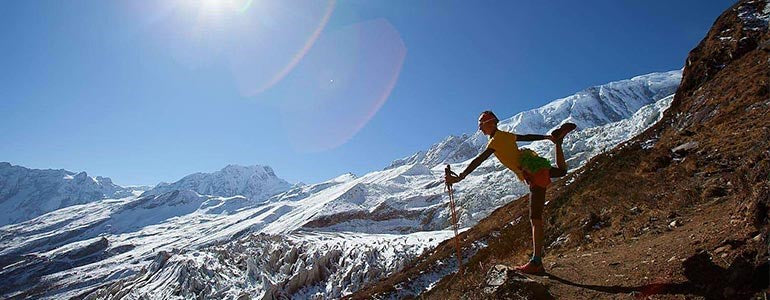
How yoga can make you a better mountain runner
Italian yoga teacher and mountain runner Tite Togni tells us why the two are a perfect match.
Image (and feature image) Richard Bull, Trail Running Nepal
To be a successful mountain runner the body and mind must be working in harmony before, during and after a race. Pioneering mountain runner and experienced Iyengar yoga teacher, Tite Togni, has known for a long time what most runners are now finding out – yoga is a perfect addition to any training schedule. We had a chat with Tite to find out why yoga is so great for runners, here’s what she had to say.
Tell us a little about yourself
I am an Italian Iyanger yoga certified teacher. In the past I was a professional figure skater, so sport has always been part of my life. I stopped pro-sports for two decades when I had kids and a family life. I got back into running when I had more time and I found the more I trained and raced, the more I went to the yoga mat. Training could not give me balance – the balance in life, mind and body. Being stressed in competitions became ok, as long as I got back to the mat. I decided this was something I could give to other sports people.
And yoga, how did you get into that?
I started yoga in 1989, in Los Angeles while studying at university, because I had some back pain. It was like anyone’s first experience of yoga – I felt the relief in my whole back. In sports your core is your abs, at the front, but in yoga the core is your spine. That was my first enlightenment, and it has never stopped!
You’ve been a bit of a pioneer in linking yoga and running?
Twenty years ago I tried to communicate basic yoga to runners, but runners were the last people that thought they needed yoga. Times have changed a lot. Lots of athletes are finding it necessary to practice yoga during cross training on a regular basis.
What benefits can yoga bring to runners?
What they gain is health for the mind and body. The muscles, tendons, ligaments and flexibility are better of course, but the mind is equally important. With yoga practice the mind is always focused. Learning to be present not just during the race, but every day so you’re able to make that decision on whether today is ok to run, or not. This is important for injury prevention.
Image by Stefano Marta, Mandala Trail
What type of yoga should runners do?
Before running you want to warm up the body and mind, get maximum oxygen delivery. Everyone has heard of the Sun Salutation. That opens up all parts of the body, every cell wakes up! After running you don’t need that. When running you really use the body, so most spaces are full and tight, joints get stiff and oxygen doesn’t flow. Use restorative practises, the spine and sitting poses that open up the chest and hips and lengthen the body.
What about injury prevention and recovery?
The best use of yoga to prevent injury is the ability to be present. Most injuries don’t come from over use but from not listening to the body in stressful moments, the moment before the injury occurs. Many injuries are due to misalignment in the spine and the right or left parts of the body. The use of props can help get into a pose even when injured.
Is there a danger with static stretching for runners, as opposed to dynamic stretching?
My guru, BKS Iyengar, would always say: “breath is king of the mind – the measure for everything is breath.” Static stretching can be dangerous if you don’t breathe. You can hold any pose if you keep breathing, today three breaths, tomorrow 10 - that is progression. Dynamic stretching can be dangerous, as can anything - sitting on the couch can be dangerous! If you don’t let the breath flow and feel every moment and every movement, if there is to be flow you must have no obstacles.
Is it best to have a teacher, like you had?
It is important to start practising with direct guidance. Now there are more online courses and with many sports people being so busy it’s easy to just practice online. But that can be misleading. The millennial success of yoga has been in direct transmission of experience, 'parampara' which means from teacher to student, in continuous feedback, to progressively gain self awareness and then you can continue alone too.
Find out more about Tite on instagram, Facebook and Twitter.

Justin Lewis takes over @suuntodive instagram
Underwater photographer and diver Justin Lewis is taking over the @suuntodive instagram for a week, starting today July 8th. Make sure to follow to see his incredible images and share his love for the ocean.
Tell us a little about yourself
Adventure and exploration are my passions. Growing up along the wild and beautiful coast of northern California, my family instilled in me strong values of conservation and respect for the natural world. I’ve been diving since I was eight and was certified at 12. On the water, in the water, beneath the water — free diving, scuba diving, surfing, ice diving, kayaking — water has been central to my life and my work. Through visual storytelling, I create rich, eye-catching content for national and international advertising agencies, editorial outlets, and conservation organizations.
Where do you dive?
I dive wherever my assignments take me, and I feel fortunate I have had the opportunity to dive in some incredible places around the world, including ice bergs in Greenland’s North Arctic, Fiji, the Maldives, Sipadan Island in Borneo, Tahiti and all over the Caribbean.
What inspires you in the underwater world?
I love working in unique underwater environments that provide a perspective rarely seen and often unexpected. For example, freshwater ecosystems and Mangrove forests. From an outside view you may not expect much is going on inside a mangrove forest, but once you get underwater the immense diversity and quantity of life is often staggering.
How would you describe your photography style?
I strive to create truthful imagery that moves the viewer and tells a powerful story.
What story do you wish to tell with your images?
Far too many stories. It seems like every day I think up a new project idea or am pitched a great potential story. Often the stories I feel motivated to work on, are the ones that require self-funding, and I can only do a handful of those each year. But if I could pick one to be funded it would be in the realm of marine conservation. Our oceans are changing at an unprecedented rate, and I am witnessing the changes first hand where I live on the Northern California coast.
Visit Justin’s website, Facebook and instagram for beautiful diving images and more information about his projects.

Sharks galore as Cristina Zenato takes over @suuntodive
Shark professional, cave diver, and PADI course director Cristina Zenato is taking over @suuntodive on Instagram for a week, beginning today. Make sure to follow to learn more about the world of sharks!© Victor Douieb
Tell us about yourself I am originally from Italy. I grew up in the African rainforest and I have lived the last 22 years in the Bahamas, where I follow my work and passion, which tend to blend into one activity. I am a shark professional and behaviourist; I specialize in human and sharks interactions. I’m also a cave diving instructor and active explorer and a PADI course director. I love to dive and share my diving through teaching it and through my images and presentations. My passion is my work, my work is my passion. Where do you dive? Primarily in the Bahamas, but I am always trying to find places where I can further my experience and knowledge about sharks and caves. I have been in many locations in the world to meet other people who work with sharks and learn more about cave, technical diving and exploration. Among them were Italy, England, Fiji, Rhode Island, California, South Africa, Mozambique, Dominican Republic, Cuba. What inspires you about the ocean? There are a lot of lessons to be learned from the underwater world and from nature in general. The most beautiful inspiration is in how everything seems to connect and flow together, in a perfect balance between beauty, life, death, darkness and light. The underwater world teaches a valuable lesson in the power of now and the power to accept all those around us and learn to coexist. Is there a story you wish to tell with your images? The story I wish to tell is the one of inspiration, I want people to see that dreams do come true, that if we listen and work where our hearts want to go we can get there. It's a story of communications with other animals, specifically with my sharks and one of acceptance and respect. It's a story of discoveries, of imagination, of a life rich of extraordinary mundane events. Visit Cristina’s website and Facebook page for incredible shark images.
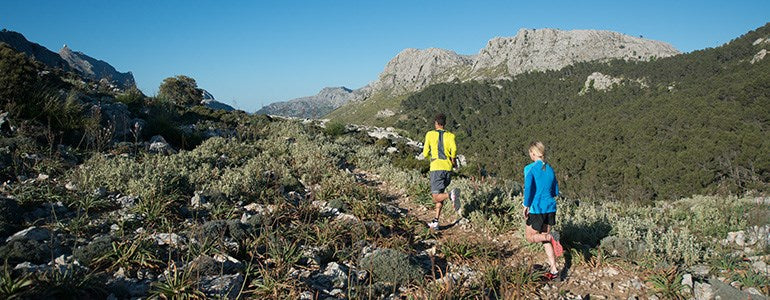
Getting more from your Ambit than just basic stats
Coach to elite ultra runners Jason Koop says there’s more training insights we can get from our Ambits than most of us realise.© zooom.at/bergermarkus.com
When it comes to trail running, coach Jason Koop says gaining meaningful information demands more effort than required for cycling or road running. “Coach Koop” – as his athletes call him – has recently published a book called Training Essentials for Ultrarunning, which condenses the knowledge he’s amassed over his sixteen-year career. It’s received positive reviews and is a must on the bookshelf of every dedicated trail runner. He’s also the director of coaching at trainright.com and is a big fan of using cutting-edge technology like Suunto Ambits to achieve better training results.© zooom.at/bergermarkus.com
There’s more in there
Koop says many trail runners don’t know how to extract high value information from their “wrist-top computers”. It takes more effort and know-how than gaining high quality information for cycling and road running via power meters and pace.
“It’s the same type of information – how hard the workout was, what energy systems were tapped into, how much stress was put on the body, but the tools are different and with trail running it takes a few more steps to extract it,” Koop says.
© zooom.at/bergermarkus.com
Trail running makes it tricky
When it comes to cycling and road running this is easier, says Koop, because it’s simply a matter of calculating the time of a workout session with the power output for cycling or the pace for running. This simple formula makes it easy to score how hard and stressful a workout was.
“It’s not as easy with trail running because you have all these other factors like the trail surface and the elevation gain and loss so you can’t work it out as easily – it just takes a few more steps to extract meaning from the information,” Koop says. “A lot of trail runners are stuck at the information stage.”
© zooom.at/bergermarkus.com
Moving past the basic numbers
Numeric information such as distance, time, elevation gain and loss, pace and heart rate are interesting, Koop says, but in of themselves don’t offer the necessary insight to build and guide a systematic trail running training programme. Achieving this, he says, requires a “physiological tie-in”.
“There’s a big difference between just looking at the usual information your watch records versus using all of it to determine how hard the workout was, how much training stress was involved, and which energy systems were tapped into. That's the bridge that ultimately needs to be gapped – taking the statistical information and having an actual training tie in.”
© zooom.at/bergermarkus.com
Taking the next steps
There are two key steps to get past the information stage.
“Firstly, you need to normalise your pace so when you’re running a 10 minute per mile pace uphill you know what pace that equates to on the flats. Strava and Training Peaks have algorithms that do this for you. This gives you an apples to apples comparison for workouts that have different elevation gains. This first step sharpens the picture of the workout from a blurred mess to something where meaningful analysis can take place. It allows you to see how hard a workout was.
“The second step is to compartmentalise the aerobic stress a workout session generates, which is predominantly during the up hill and flat sections, from the muscular-skeletal stress predominantly generated in the downhill sections.
“If your normalized pace on the flats and uphills are getting better, your aerobic system is adapting. Similarly, if you are handling the total amount of descending or the rate of descending better, your muscular-skeletal system is adapting.”
